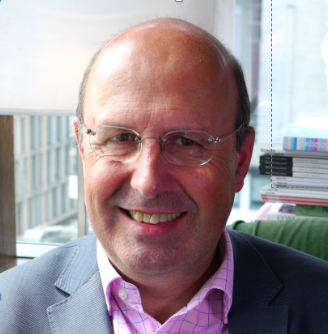You can sign up to our LinkedIn newsletter here.
It’s really interesting to see how, as your portfolio matures, there are opportunities to add additional elements to your offer and use that to increase your effective fee rate. So, if your primary offer as a portfolio executive is part-time responsibility for a function in a smaller organisation then that’s great, but now consider these other two offers that you can add to the picture.
One-to-one support
As you transition out of a role as a part-time executive, there is a valuable opportunity to provide one-to-one support for people within the business. For example, perhaps you are the part-time finance director and they’re looking to appoint a full-time direct finance director. If you are going to be replaced by the promotion of an existing financial controller, then, as part of the transition, you can reduce your input and start coaching and mentoring the new person. Your coaching and mentoring rate should be a significant premium over your normal day rate. So, if your day rate is £1000 a day, your coaching rate should at least be £300 an hour.
Over time, you may end up doing more one-to-one support for new clients. You may find a possible portfolio executive opportunity where you realise the right thing to do is provide one-to-one support for the incumbent head of finance who’s not quite ready to be a finance director. Alongside this you may be able to provide a non-executive or board advisor role to support the CEO.
One to many support
Let’s continue to develop the finance function example. You have several 1-2-1 support relationships and you seek to build more value by, additionally, providing a group setting. I have done this successfully with CEOs and leaders of social impact organisations. The membership, duration, frequency and content of the group sessions will depend on the needs and commitment of the members. My advice is that you need to meet at least monthly and for at least 90 minutes to build some cohesion and momentum in the group. The minimum group size is yourself plus five. Anything less and when somebody is unable to attend then the group tends to breakdown.
What should you do when you meet? This very much depends on what you are trying to achieve but I suggest you should consider these session elements:
Personal sharing
It is vital to create a safe space for individuals to build trusted relationships with another. This is even more powerful if you can encourage participants to share personal and family challenges and not just professional challenges.
External insight
External speakers or well-established practitioners can bring external insight to your group of real value with just 10 or 15 minutes of sharing a point of view, their professional experience or insight into emerging trends. If you are running a group for members of the finance function, you may use this as an opportunity to expose your members to topics beyond the finance function that will broaden their perspectives. For example, leadership and personal development, IT, governance, strategy, AI, social media and networking.
Workshop based learning
Experiential learning is often more powerful than a simple talk from an expert. Workshop based learning sessions probably require a minimum of 60 minutes. When we first established InspiredCEOs.biz we used external experts to deliver a fully interactive on-line workshop between 8am and 9am every week. As this was at the beginning of CoVid lockdown both experts and CEOs had more availability than they might have today.
Hot Seating
There are a variety of terms for this process but the essential elements are that an individual (in the hotseat) presents an issue to the group, members of the group explore the issue by asking questions, the individual has an opportunity to reframe the issue, members offer suggestions and the individual commits to action.
Questions and Answers
As an alternative to Hot Seating, you, as the group leader, provide an opportunity to answer any questions that members may have.
Curriculum based learning
You may wish to establish a programme where you are providing a learning journey based on a curriculum. A curriculum will have a defined set of modules and a defined set of learning outcomes. It will feel much more like a course. You will have to work harder at developing training materials upfront but you may attract individuals who want to see progress against a plan and a well-defined outcome. Ideally, you develop a carousel curriculum. Like a carousel, you can join or leave at any point because each learning unit is independent of the others. The great advantage of a carousel approach is that you can recruit continuously and individuals may retain membership for more than one cycle in order to further embed their learning.
Reflection Sessions
In my experience, information without action fails to become knowledge, skills or wisdom. Reflection sessions are an opportunity for the group to share their experience of implementing the ideas they have learnt. This can also foster accountability and strengthen mutual support.
Setting fees
The fee you charge is often difficult to pitch and very much depends on the value you are going to provide.
Some of the session types described above will require preparation and may involve paying others. In addition, maintaining and growing the group will require sales and marketing effort which could be costly both in terms of time and money.
You will also need to recognise the likely turnover of members. I ran CEO groups were members stayed for three to five years. However, a course-style format is likely to turnover almost all your members at the end of the course. On the face of it, five members paying £300 per month for a 1-hour session looks like a fee rate of £1,500 per hour. If a member stays for five years, the lifetime value is £18,000. However, if you spend 2 hours a month preparing for the session, your fee rate is down to £500 per hour. If members stay for only a year, then the lifetime value of a member is only £3,600. You will need to think carefully about how much time and money you are ready to invest to recruit a member.
Conclusion
Expanding your offer by providing 1-2-1 and 1-2-Many support can be an attractive option for many portfolio executives. However, there is a big difference between providing these services opportunistically to existing clients and investing in building a pipeline of new opportunities.
If you want to move from serving existing clients to establishing a new service offer then I recommend that you do the strategic thinking and business modelling to test whether this is going to make sense for you.

Charles McLachlan is the founder of FuturePerfect and on a mission to transform the future of work and business. The Portfolio Executive programme is a new initiative to help executives build a sustainable and impactful second-half-career. Creating an alternative future takes imagination, design, organisation and many other thinking skills. Charles is happy to lend them to you.
